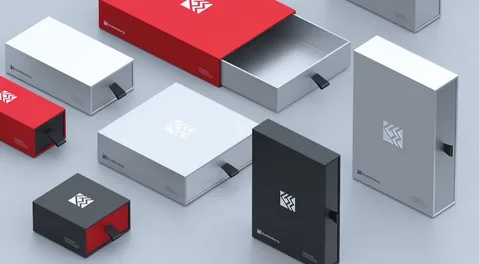Rigid drawer boxes have long been a preferred choice for packaging high-end products due to their durability, elegance, and versatility. These boxes not only protect the contents inside but also enhance the overall presentation, making them essential in industries ranging from luxury goods to consumer electronics. Designing rigid drawer boxes that are both functional and stylish requires a thoughtful approach that balances aesthetics with practicality. This guide will explore expert tips for achieving that perfect combination.
Understand Your Product and Its Requirements
When designing rigid drawer boxes, the first and most important step is understanding the product that will be housed inside. Every item has unique requirements in terms of size, weight, and fragility, and your box design should cater to these specifications. For instance, jewelry and luxury watches demand a snug fit with cushioned interiors to prevent movement, while electronics may require reinforced compartments to protect delicate components. Ignoring these requirements can lead to damaged products and dissatisfied customers, defeating the purpose of premium packaging.
Additionally, consider the functional aspects beyond protection. Rigid drawer boxes should allow for easy opening and closing without compromising sturdiness. Including features like magnetic closures, ribbon pulls, or sliding mechanisms can improve usability while maintaining a sleek appearance. By fully understanding your product’s needs, you ensure the box is not only visually appealing but also serves its primary function effectively.
Prioritize High-Quality Materials
The material selection for rigid drawer boxes significantly influences both functionality and style. These boxes are typically constructed from high-density paperboard or chipboard, covered with paper, fabric, or specialty finishes. Choosing durable materials ensures the box retains its shape, withstands handling, and protects the contents over time. Additionally, premium finishes such as textured laminates, metallic foils, or soft-touch coatings can elevate the tactile experience, giving the unboxing process a luxurious feel.
It’s also essential to consider eco-friendly options. Sustainable materials like recycled cardboard or biodegradable laminates appeal to environmentally conscious consumers without compromising quality. By investing in high-quality and thoughtfully selected materials, your rigid drawer boxes will not only look stylish but also communicate a sense of sophistication and care for the environment.
Focus on Aesthetic Design Elements
A functional rigid drawer box can be further enhanced by paying attention to design aesthetics. Color schemes, patterns, typography, and embossing all contribute to the visual impact of the packaging. For luxury brands, subtle elegance often works best, using muted tones, minimalistic designs, and metallic accents. In contrast, vibrant patterns and bold colors may suit more playful or contemporary products. The design should reflect your brand identity while also appealing to your target audience.
Furthermore, the box’s exterior should be complemented by an interior design that adds to the overall experience. Incorporating custom inserts, satin linings, or contrasting colors inside the drawer can surprise and delight customers. Such thoughtful details make the unboxing experience memorable, creating a strong emotional connection with your brand. Aesthetic appeal, combined with functionality, ensures your rigid drawer boxes stand out on shelves and in customers’ minds.
Incorporate Practical Features for User Convenience
Functionality in rigid drawer boxes extends beyond structural integrity to user-friendly features. Consider adding compartments or dividers to organize multiple items within a single box. For example, a cosmetic set may benefit from individual slots for each product, preventing clutter and enhancing usability. Magnetic closures, ribbon pulls, and easy-slide mechanisms also make accessing the contents smoother while maintaining the box’s premium appearance.
Additionally, think about the reusability of the box. A rigid drawer box that doubles as storage for personal items or collectibles adds value for the customer. When designing your boxes, prioritize features that enhance convenience, making the packaging not only a protective container but also a practical accessory. Combining usability with visual appeal ensures that your rigid drawer boxes are both functional and stylish, leaving a lasting impression on customers.
Test and Refine Your Design
No design should be considered final without proper testing. Prototyping your rigid drawer boxes allows you to evaluate both aesthetic appeal and functional performance. Check the sturdiness of the box, the smoothness of the sliding mechanism, and the effectiveness of any cushioning or inserts. Gather feedback from stakeholders and potential users to identify any issues or areas for improvement. This iterative approach ensures the final product meets all practical requirements while looking polished and professional.
Refining your design also provides an opportunity to enhance the branding experience. Adding subtle branding elements such as embossed logos, custom patterns, or printed messages inside the drawer can reinforce brand identity and leave a memorable impression. By testing and refining, you can strike the perfect balance between functionality, style, and brand representation, ensuring your rigid drawer boxes are both practical and visually captivating.
Conclusion
Designing functional and stylish rigid drawer boxes requires a comprehensive approach that considers product requirements, material quality, aesthetic appeal, practical features, and thorough testing. Each element plays a crucial role in creating a packaging solution that protects your products, delights your customers, and reflects your brand’s identity. By carefully planning and executing each step, you can produce rigid drawer boxes that are not only visually stunning but also highly functional, ultimately elevating your brand’s image and customer experience.





